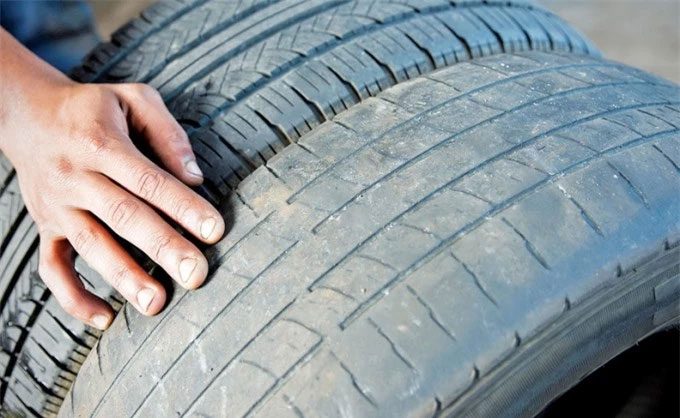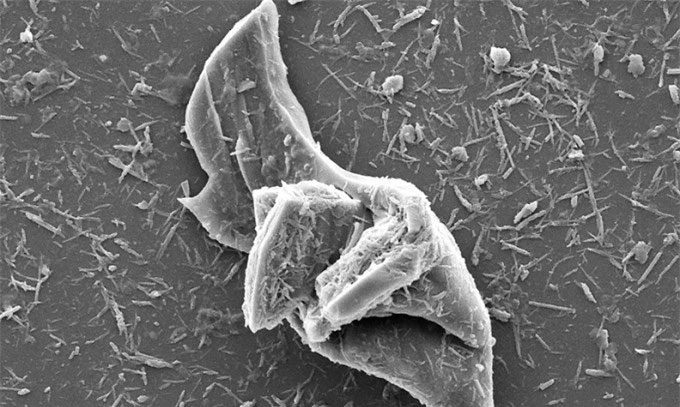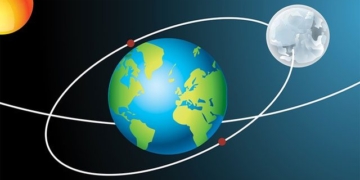Despite lacking exhaust pipes, electric vehicles still contribute to pollution as their tires wear down, generating very fine rubber particles.
On a forum for Rivian electric vehicle users, complaints about rapid tire wear are continuously surfacing. A user from Colorado, USA, loaded two motorcycles onto the bed of his Rivian pickup truck and took them for a spin. However, after approximately 6,000 miles (over 9,600 km), his tires had worn down by about 0.2 mm.
Somewhere along the roads he traveled, this worn tire material exists in the form of ultra-fine particles. In fact, rapid tire wear is not unique to Rivian vehicles; it is a common issue among all electric vehicle users.

Electric vehicle batteries are the main reason electric vehicles weigh more than internal combustion engine vehicles of the same type.
Unlike vehicles powered by internal combustion engines, electric vehicles do not have exhaust pipes; however, the issue lies with the weight of these vehicles, which is often significantly heavier than that of internal combustion engine vehicles. This increased weight causes electric vehicles to contribute to a new form of environmental pollution, which is troubling scientists and environmental activists alike.
The issue of tire wear and pollution is not a new one. As vehicles move along roads, their tires rub against the pavement, generating rubber particles and many other small debris. Ultimately, these ultra-fine particles (sometimes as small as human cells) can linger in the air, float in bodies of water, or even exist within living organisms.
Previously, scientists in Washington State, USA, found a link between the chemical 6PPD—a substance used in tires to prevent cracking—and the deaths of large numbers of juvenile salmon. Researchers believe that when it rains, water washes this 6PPD into drains, rivers, or streams, where fish subsequently ingest it.

Worn tires release rubber particles that pollute the air and water. (Photo: Automotive News).
Additionally, the Royal College of London estimates that each year, the massive number of vehicles worldwide emits approximately 6 million tons of tire particles. According to this university, tire particles are linked to heart and lung diseases, cancer, and developmental and reproductive disorders.
Tire particle pollution can also negatively affect individuals suffering from chest tightness and chronic obstructive pulmonary disease; the chemicals and other substances found in tires can harm the liver, kidneys, and weaken the immune system. Zinc and lead released into the environment as tires wear can cause abdominal pain, kidney failure, fatigue, and dizziness.
Currently, regulatory bodies in Europe have proposed a 27% reduction in brake dust and tire particle emissions for the upcoming Euro 7 emissions standard. If approved, this standard will take effect in July 2025.

Tire particles under a microscope. (Photo: Automotive News).
On the tire manufacturing side, major companies from the USA, Europe, Japan, and China are collaborating to establish a common testing procedure for the entire industry to accurately measure tire pollution levels.
According to Tracey Norberg, Senior Vice President and General Counsel at the Tire Manufacturers Association in the USA: “Step one is to find ways to accurately quantify performance. This is a significant and collective effort across the tire industry.”
Given the varying road surfaces, finding a tire compound that minimizes wear is not a simple task. Not only for electric vehicles, tire manufacturers aim to reduce pollution caused by tires for all vehicles and are currently testing bio-based materials.
Tracey Norberg also mentioned: “Typically, there won’t just be one solution to tackle the issue. Association members will explore multiple solutions and seek opportunities for improvement. The most important thing is to create an environment that allows for this improvement.”



















































